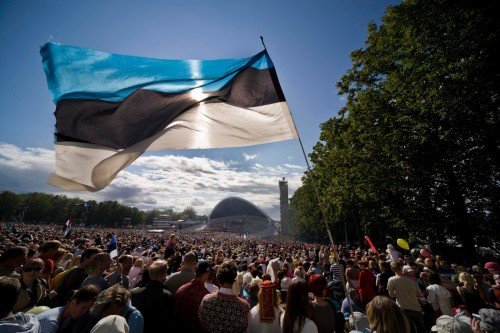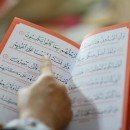Unveiling the Enigmatic Beauty of the Estonian Language: A Linguistic Journey into the Baltic Soul.



Introduction:
Language is not only a tool for communication but also a reflection of the unique cultural heritage of a nation. In this blog post, we will embark on an exciting journey into the Estonian language. As one of the world's most intriguing and lesser-known languages, Estonian boasts a rich history, distinctive features, and a captivating linguistic structure. Let's delve into the linguistic world of Estonia and discover the hidden treasures of this Baltic gem.
-
A Language Rooted in History: Estonian, or eesti keel as it is called by its speakers, belongs to the Finnic branch of the Uralic language family. This places it in the same linguistic group as Finnish, Hungarian, and a few other regional languages. With its origins dating back over 2,000 years, Estonian has evolved through influences from Germanic, Baltic, and Slavic languages, leaving behind a complex linguistic tapestry.
Estonian, also known as eesti keel, is a language deeply rooted in history. Its origins can be traced back over 2,000 years when the ancestors of modern-day Estonians arrived in the region of present-day Estonia. The Estonian language belongs to the Finnic branch of the Uralic language family, which is separate from the Indo-European language family that encompasses most of the languages spoken in Europe.
The Uralic language family includes languages spoken by various Finno-Ugric peoples across northern Eurasia. Estonian is closely related to Finnish, as well as to other Finnic languages such as Karelian and Võro. The Finnic languages, in turn, are part of the larger Uralic language family, which includes Hungarian, Sami languages, and several smaller regional languages.
Throughout history, Estonia has been influenced by neighboring powers and cultures, which has had an impact on its language. In the Middle Ages, Estonia came under the rule of the Teutonic Knights, followed by the Swedish and Russian Empires. These periods of foreign domination brought German, Swedish, and Russian influences to the Estonian language.
During the era of German rule, which lasted for several centuries, the Estonian language was primarily used by the peasantry and had limited written use. The German influence is evident in the loanwords that entered the Estonian vocabulary during this time. However, despite external influences, the Estonian language managed to maintain its distinctiveness and developed as a language of its own.
In the 19th and 20th centuries, Estonia experienced a period of national awakening, known as the Estonian National Awakening, which had a profound impact on the development and preservation of the Estonian language. The Estonian intelligentsia played a crucial role in promoting the use of Estonian in education, literature, and public life. Estonian language activists worked tirelessly to standardize the language, develop a literary tradition, and create a sense of national identity.
This period of linguistic and cultural revival was not without challenges. The Russian Empire, which ruled Estonia at the time, imposed restrictions on the use of the Estonian language and promoted the use of Russian instead. However, despite these obstacles, the Estonian language persisted and flourished.
Today, Estonian is the official language of Estonia and serves as a unifying force for the Estonian people. It is spoken by the majority of the population, and efforts to preserve and promote the language continue to be a priority. The Estonian language represents the cultural heritage and national identity of the Estonian people, embodying their rich history and unique place in the Baltic region.
-
Phonetics and Pronunciation: Estonian pronunciation may seem intimidating at first, but it holds a consistent and logical system. The language features a variety of vowel sounds, including the infamous "ö" and "õ." The emphasis in Estonian is always placed on the first syllable, lending the language a melodic quality. While pronunciation can be challenging, mastering it will reward you with a profound sense of accomplishment.
-
A Linguistic Wonderland: Estonian is renowned for its extensive declension system and the absence of grammatical gender. Nouns have 14 cases, each serving a specific purpose in indicating location, direction, possession, and more. This intricate system allows for precise expression, but it requires careful attention to detail. Verbs, on the other hand, have a relatively simple conjugation pattern, making them more accessible to learners.
-
Vocabulary and Influences: Estonian vocabulary has been shaped by its geographical location and historical context. The language incorporates loanwords from German, Russian, and Swedish, among others. However, Estonian has remained resilient in preserving its uniqueness and has actively coined new terms to maintain its linguistic identity. As a result, you'll encounter words like "arvuti" (computer) and "internet" that sound similar to their English counterparts.
-
The Estonian Language Revival: Estonian experienced a significant transformation during the 19th and 20th centuries when Estonia sought to preserve and revitalize its language. This linguistic revival movement was essential for cultural preservation and national identity. Today, Estonian is the official language of Estonia, and efforts to promote and protect it remain strong.
-
Challenges and Rewards of Learning Estonian: Learning Estonian can be a formidable task, particularly for non-native speakers. However, the journey is filled with unique rewards. Mastering the language offers a gateway to understanding Estonia's rich culture, literature, and folklore. Additionally, it fosters deeper connections with Estonians, as language proficiency often leads to enhanced cultural exchange and meaningful relationships.
Conclusion:
The Estonian language is a linguistic treasure, a testament to Estonia's vibrant history and cultural heritage. Its distinct phonetics, intricate grammar, and evolving vocabulary make it an enticing challenge for language enthusiasts. By exploring Estonian, we can embark on a journey of discovery, broadening our horizons and connecting with a truly remarkable language and its people.
Recent Posts

Understanding Translation Serv...

Agenzia di Traduzione a Roma: ...

Die Essentielle Rolle von Übe...

Die Essentielle Rolle von Übe...

Die Essentielle Rolle von Übe...

La Traduction Assermentée: Un...
Share it.
© Copyright 2022 LLC
